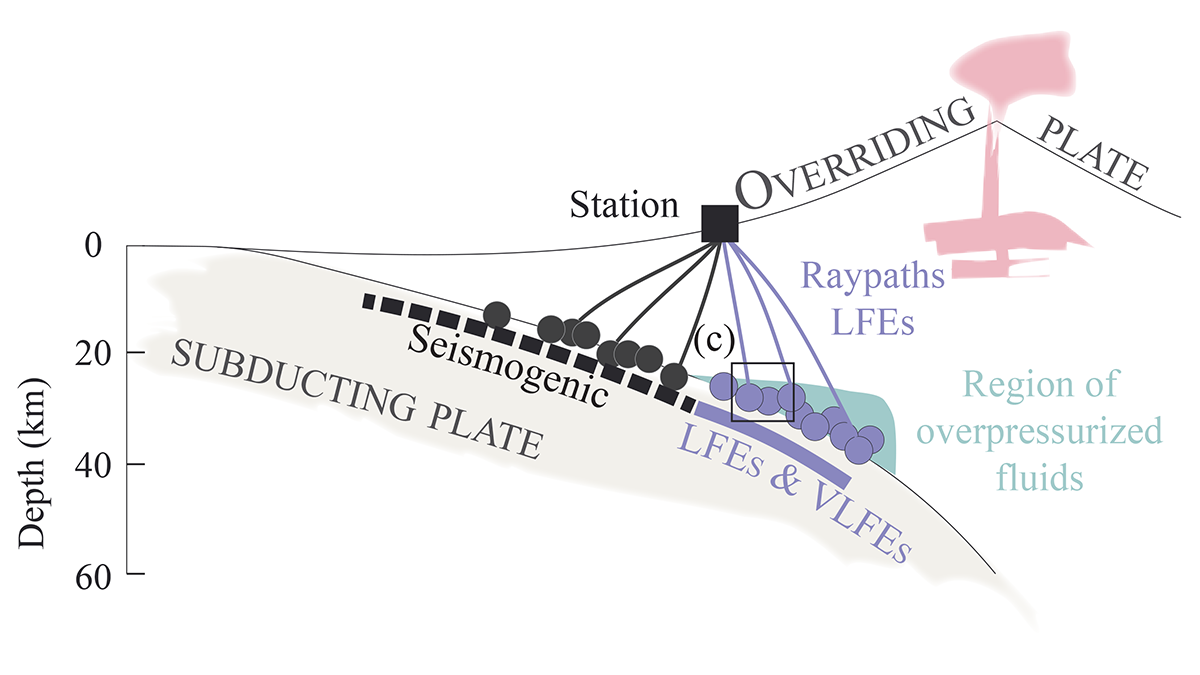Editors’ Highlights are summaries of recent papers by AGU’s journal editors.
Source: AGU Advances
The mechanisms that generate low-frequency earthquakes (LFEs) have been one of the most fundamental and puzzling questions in earthquake science in the past decade. LFEs differ from normal earthquakes by their depletion of high frequencies and by their long duration. LFEs occur in regions of overpressured fluids at the lower boundary of the seismogenic zone. Typically, LFEs have been associated with slow slip events in the megathrust, a sign of release of stored seismic energy that, in some cases, preceded large earthquakes.
Fliedner and French [2023] test an alternative hypothesis that LFEs are simply attenuated regular-speed earthquakes. The authors conducted a series of experiments to measure the frequency-dependent attenuation of samples of foliated metamorphic rocks (a lithology found along the subduction plate boundary) under dry and water-saturated conditions. By extrapolating the results to geological conditions of pressure and temperature, they show that the presence of fluids attenuates seismic waves from LFEs near the source. Therefore, LFEs do not necessarily record slow fault slip.
These results have important implications for understanding the origin of LFEs and highlight the important role of fluid in the occurrence and behavior of these types of earthquakes. However, it is likely that fluid pressure attenuation occurs simultaneously with dynamic faulting processes, suggesting that both mechanisms are involved in the generation of LFEs. New geodetic and seismological observations will help to clarify the relationship between slow slip and LFEs.
Citation: Fliedner, C., & French, M. E. (2023). Measurements of wave-induced attenuation in saturated metapelite and the band-limitation of low-frequency earthquakes. AGU Advances, 4, e2022AV000837. https://doi.org/10.1029/2022AV000837
—Marcos Moreno, Editor, AGU Advances

